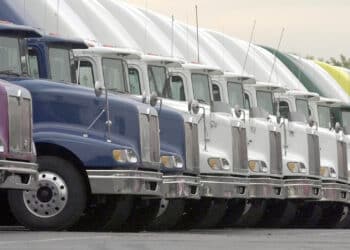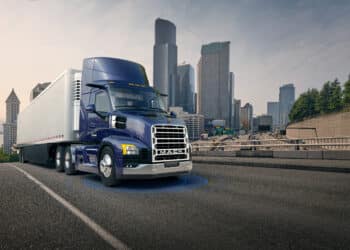Registrations for zero-emission commercial vehicles in 2024 are on pace to breeze past last year’s total, signaling momentum for the EV movement despite some pushback.
In the first half of 2024, there were 1,381 registrations for zero-emission (ZEV) heavy-duty trucks, medium-duty trucks and buses in the United States, according to a Dec. 11 report by the International Council on Clean Transportation. That marks a 72.6% increase from 2023 if registrations continue at the same rate through yearend.
ZEV heavy-duty truck registrations, including EVs, reached 575 at midyear, with manufacturers Volvo Trucks and Daimler accounting for the largest market shares at 35% and 31.5%, respectively. Heavy-duty ZEV registrations are on pace to outgain last year’s total of 764 by 50.5%.

The increase comes despite concerns of inadequate charging infrastructure and duration to support heavy-duty EVs and long-haul trucking, Wayne Hammond, vice president of strategic initiatives at Portland, Ore.-based dealership TEC Equipment, told Equipment Finance News.
“For the customer who is looking for an EV, the first question it comes down to is, can the electric truck do the job that the customer needs?” he said. “If you need a long-haul sleeper cab to go from Los Angeles to Denver and back, absolutely not. There’s no electric truck that can do that.”
An electric heavy-duty truck can typically travel up to 500 miles on a single charge, according to the Environmental and Energy Study Institute. For comparison, a diesel truck can travel between 900 and 2,000 miles before needing to refuel, according to truck dealer Hale Trailer Brake and Wheel.
Thus, it’s possible that regulatory pressures to manufacture and sell more EV trucks are leading to increased registrations, rather than true market demand.
ZEV bus registrations soar
Meanwhile, 641 ZEV buses were registered in the first half of 2024, already topping last year’s total of 586, according to the report. Traton Group held the largest market share, 58%, followed by Daimler, 31%.

While heavy-duty trucks can only perform a fraction of the jobs performed by their diesel counterparts, “buses are a great application,” Duane Welty, head of zero-emission vehicles and transportation technology strategy at San Leandro, Calif.-based dealership Peterson Trucks, told EFN. That’s because they can generally hold their charge to complete tasks.
There are several state and federal financial incentives for commercial EV buses, including:
- The California Air Resources Board’s Truck and Bus Voucher Incentive Project, which provides up to $120,000 per heavy-duty electric truck and up to $375,000 per electric school bus;
- The Environmental Protection Agency’s Clean School Bus Rebate Program, offering up to $325,000 for ZEV Class 7 and Class 8 buses and charging equipment; and
- Oregon’s Clean School Bus Grants, providing up to $50,000 for ZEV buses and $5,500 for charging equipment.
A new EV heavy-duty truck typically costs more than $400,000, according to the American Trucking Association. A new EV bus also costs roughly $400,000, according to the U.S. Department of Energy. Both are typically more than twice as expensive as their diesel counterparts.
Meanwhile, ZEV medium-truck registrations reached 165 at midyear, with Daimler’s 49.5% market share being the largest among OEMs. There were 237 ZEV medium-duty registrations in 2023.
The third annual Equipment Finance Connect at the JW Marriott Nashville in Nashville, Tenn., on May 14-15, 2025, is the only event that brings together equipment dealers and lenders to share insights, attend discussions on crucial industry topics and network with peers. Learn more about the event and register here.









